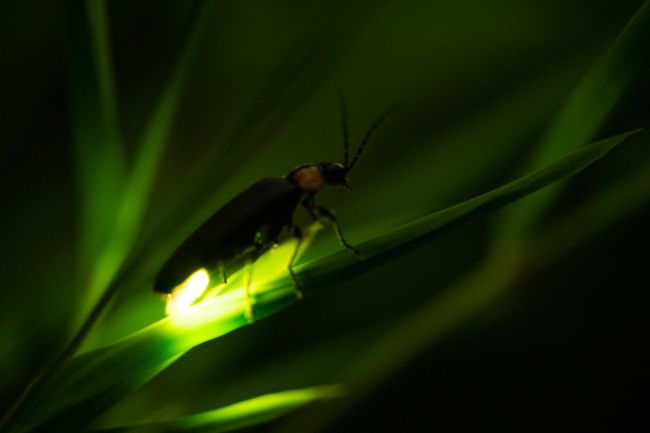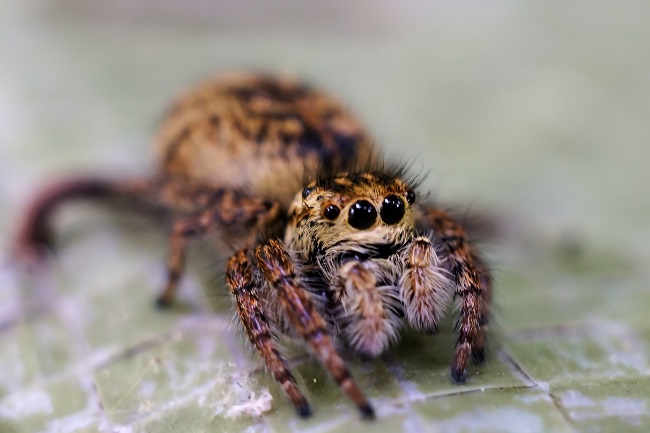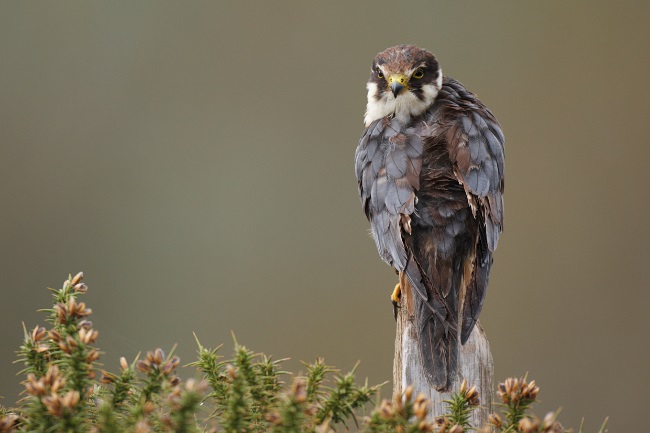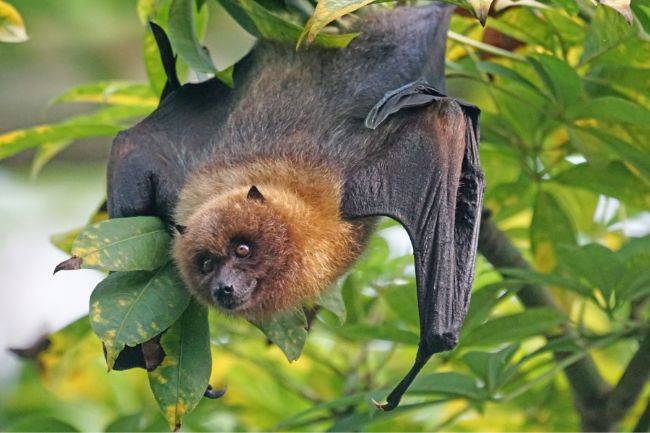Fireflies are toxic to most animals, meaning that despite their visibility in the dark, there aren’t many predators willing to take a bite. However, they are still eaten by lizards, birds and a number of other invertebrates.
Contents
What are fireflies?

Fireflies are a type of beetle that uses bioluminescence to communicate during the mating ritual and to warn off predators. Bioluminescence is the ability some plants and animals have to give off a glow, through the use of chemical reactions. This glow can come in a variety of colours, from green to blue to yellow.
There are over 2,000 species of firefly, sitting within the Lampyridae group. Fireflies can be found across the world in countries from North America to Japan, though in some countries, such as England the word glow-worm may be used, while the glow-worms found in New Zealand are a type of gnat, not related to the Lampyridae.
Different species of fireflies glow in different ways, with some emitting pulses of light, while others glow continuously. In some species, only the larvae will glow, while in others both adults and larvae will glow.
| Predator | Description |
|---|---|
| Bats | Many species of bats, such as the Eastern red bat, feed on fireflies |
| Birds | Some bird species, including nighthawks and nightjars, are known to consume fireflies |
| Spiders | Certain spider species, like orb-weaving spiders, may prey on fireflies |
| Amphibians | Some frogs, toads, and salamanders feed on fireflies |
| Beetles | Certain predatory beetles, like ground beetles, are known to consume fireflies |
It is thought the ability to glow evolved in these beetles within the larvae, as a signal to tell predators that they were unpleasant to eat. This warning signal then further evolved to be used to communicate to potential partners among the adults.
Despite this evolution of their bioluminescence, the toxic chemicals that make fireflies an unpleasant food source still exist within the species, meaning that few predators wish to take a bite out of these little insects. It is the presence of lucibufagins that make these insects unpleasant to most animals. However, there are still some species that will happily chow down on these little beetles.
Also read: Fireflies Food & Drink Explained (How, When…)
Firefly predators
Amphibians

Amphibians are thought to be some of the firefly’s top predators, with toads, frogs and newts all happily making a meal out of these luminescent insects. Part of the reason for this may simply be that they share very similar habitats, with fireflies often living in damp or marshy areas.
These amphibians are usually not specialised in eating fireflies, and instead are opportunistic feeders, taking advantage of a, at times, plentiful food source.
Spiders

There are many different kinds of spider, all adapted to hunt prey in a variety of clever and fascinating ways. Some spiders are adapted to ambush hunting, which means they lie in wait for their prey and then pounce on them. Others are hunting spiders, that will stalk the undergrowth looking for prey. However, the most likely spiders to encounter and eat a firefly are the web building spiders.
Web building spiders don’t tend to prioritise particular species, instead simply catching what comes into their web. If the species is particularly undesirable, they may choose to cut it loose, but most of the time they will just have a tasty snack.
Also read: What do Gardens Spiders Eat? (Explained)
Birds

Many birds react badly to the taste of fireflies, with the toxins they contain causing birds to vomit and regurgitate the unfortunate beetles. However, as with all toxic animals, each individual bird will usually have to attempt to eat one before it learns they are an unpleasant snack. Despite the presence of these chemicals, however, some species of birds are still able to stomach of toxic firefly snack.
Reptiles

Like birds, many reptiles can find fireflies simply too much for them to stomach, however those that are specialised in eating insects will usually give it a go. Some lizard species in particularly are thought to be able to eat fireflies.
Bats

Bats and fireflies are perhaps the most likely enemies of all, with both flying a great deal at night, and many bat species being insectivores. However, just like birds bats can find the taste of fireflies immensely unpleasant, and while it is easy for them to catch them out of the air, they have been observed dropping them without taking a bite. Some bat species, however, are thought to eat fireflies.
Fireflies
Fireflies eat a range of foods depending on the species. Some are even cannibalistic, eating other fireflies when the opportunity occurs. In some species, this may be a particularly important food source as they are not able to produce lucibufagins themselves, meaning they can gain them by eating other fireflies that do.
Evolutionary winners
The fact is, for a highly visible, largely defenceless insect, fireflies do not have a great number of predators. It seems these tiny beetles have out smarter much larger and more voracious animals, simply with the twinkling of their lights. While they might have been a tasty dinner at one point in their evolution, the toxic chemicals they hold within themselves have saved them from being eaten into extinction, showing us that beauty, can sometimes be dangerous.

